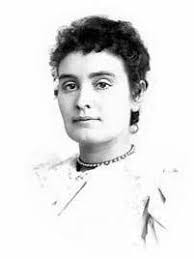
For many of us, though, school is starting. Here in the mountains of New Mexico, the sunflowers start to bloom about the same time the school bells start to ring, and the smell of chili roasting wafts on the air. All of these are signs that summer is on the wane and fall is coming.
These cookies really have a bit of a fall feel to them. The molasses gives them an earthy, satisfying taste that calls me home. Time to settle in and enjoy the last of the season before fall, with all its activities, starts again.
Molasses Chocolate Crinkles
½ cup molasses
½ cup cocoa
¼ cup sugar
1 tsp baking soda
1 tsp cinnamon
1 tsp vanilla
¼ tsp salt
1 ½ cups flour
Topping: ¼ cup powdered sugar
Heat oven to 350
Beat all ingredients except flour until mixed.
Add flout just until blended
Form into 1: balls and roll in sugar
Place 1” apart on cookie sheet
Bake 9-10 minutes until puffed and cracked.
Cool 1 minute before removing from cookie sheet.

Anne Sullivan
Anne Sullivan reimagined special education, using her experience and natural pedagogical talent. She is famous for being a teacher of Helen Keller, a deaf and blind girl. Anne became her educator and eventually a friend. Being visually impaired herself, Sullivan knew what the girl was experiencing. It allowed her to choose special teaching techniques to help Hellen communicate with the world. Anne would take her hand and spell each word on the girl’s palm. This creative method proved to be effective, and soon, Hellen learned more and more words. With Anne’s help, Helen Keller became a well-known author, political activist, and the first blind-deaf person to earn a bachelor’s degree.

William McGuffey
William McGuffey was born in 1800 and was such a precocious child that he began to teaching classes at age 14. While teaching in Ohio and Kentucky, McGuffey saw that there was no standard method to teach students how to read; often, the Bible was the only book available.
McGuffey paused his teaching career to attend college himself. By age 26, he was Professor of Languages at Miami University in Oxford, Ohio. In 1835, his friend Harriet Beecher Stowe asked him to write a series of readers for the publisher Truman and Smith. McGuffey Readers, a series of books for elementary school students, was used in American schools for the next 70 years.

Emma Willard made education accessible for women. She founded the first higher education institution for females in America, the Troy Female Seminary. The school still exists as the Emma Willard School. Emma Willard made the promotion of education her life-long aim. She fought for women’s rights to achieve higher education of the same quality as men could get. In her institution, female students studied science, mathematics, philosophy, and other subjects that were not previously available to them. Willard’s progressive outlook prioritized equality changed the perspective people had on education.
Vivian Paley was a preschool teacher and the author of numerous books. She emphasized the importance of storytelling and play for the development of children. Paley believed that teachers who promoted fantasy and make-believe evoked the most interest in their students. She made her lessons memorable for students and encouraged them to express feelings and ideas in the classroom. Vivian Paley received numerous awards acknowledging her contribution to preschool teaching.
Sal Khan
Sal Khan tried to make education more accessible to people around the world. This American educator founded the Khan Academy, and online platform that granted people access to educational topics. It covers many different school subjects, including math, computing, history, and the arts. His use of technologies revolutionized education.


